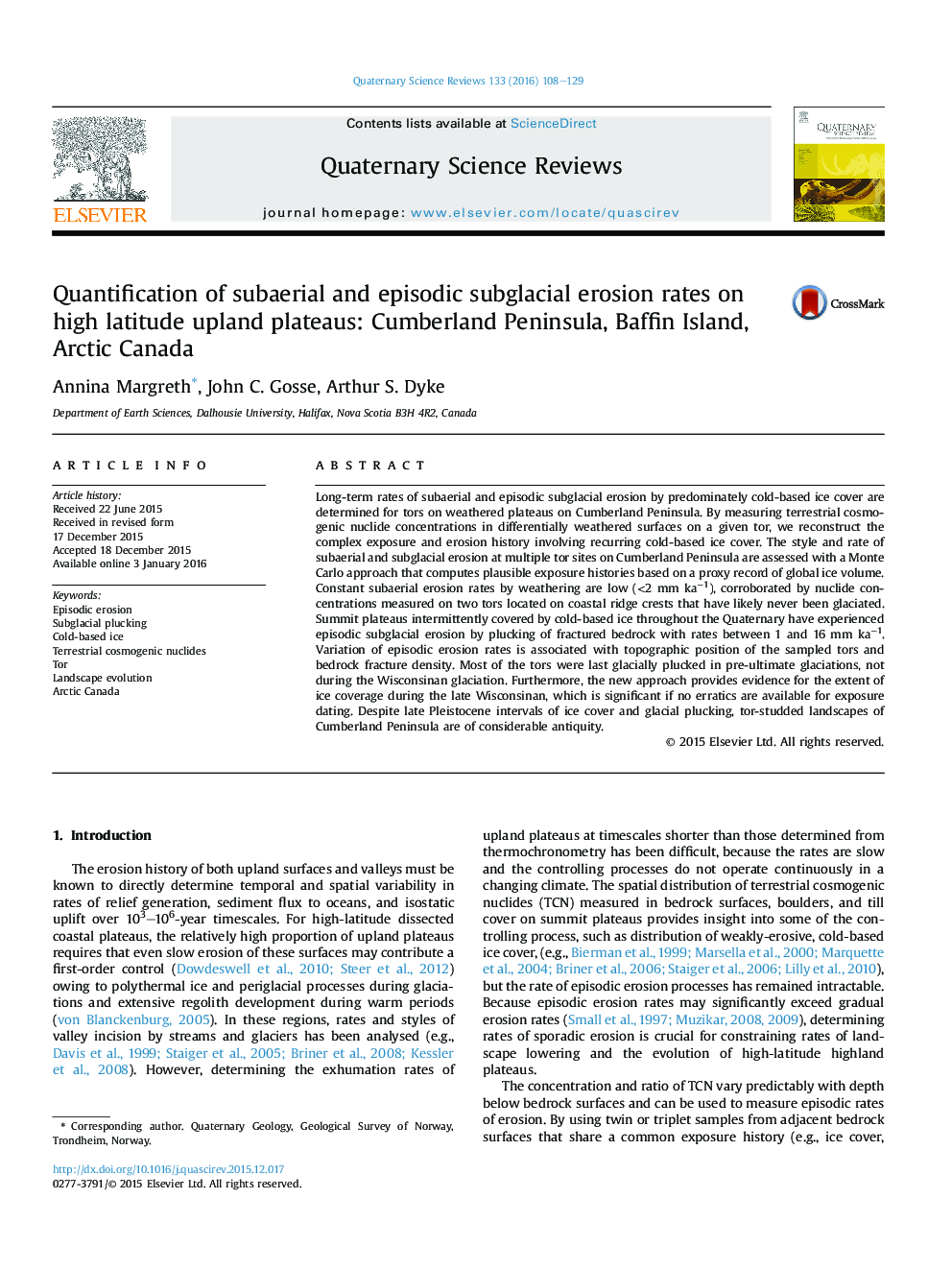| Article ID | Journal | Published Year | Pages | File Type |
|---|---|---|---|---|
| 6446148 | Quaternary Science Reviews | 2016 | 22 Pages |
Abstract
Long-term rates of subaerial and episodic subglacial erosion by predominately cold-based ice cover are determined for tors on weathered plateaus on Cumberland Peninsula. By measuring terrestrial cosmogenic nuclide concentrations in differentially weathered surfaces on a given tor, we reconstruct the complex exposure and erosion history involving recurring cold-based ice cover. The style and rate of subaerial and subglacial erosion at multiple tor sites on Cumberland Peninsula are assessed with a Monte Carlo approach that computes plausible exposure histories based on a proxy record of global ice volume. Constant subaerial erosion rates by weathering are low (<2 mm kaâ1), corroborated by nuclide concentrations measured on two tors located on coastal ridge crests that have likely never been glaciated. Summit plateaus intermittently covered by cold-based ice throughout the Quaternary have experienced episodic subglacial erosion by plucking of fractured bedrock with rates between 1 and 16 mm kaâ1. Variation of episodic erosion rates is associated with topographic position of the sampled tors and bedrock fracture density. Most of the tors were last glacially plucked in pre-ultimate glaciations, not during the Wisconsinan glaciation. Furthermore, the new approach provides evidence for the extent of ice coverage during the late Wisconsinan, which is significant if no erratics are available for exposure dating. Despite late Pleistocene intervals of ice cover and glacial plucking, tor-studded landscapes of Cumberland Peninsula are of considerable antiquity.
Related Topics
Physical Sciences and Engineering
Earth and Planetary Sciences
Geology
Authors
Annina Margreth, John C. Gosse, Arthur S. Dyke,
